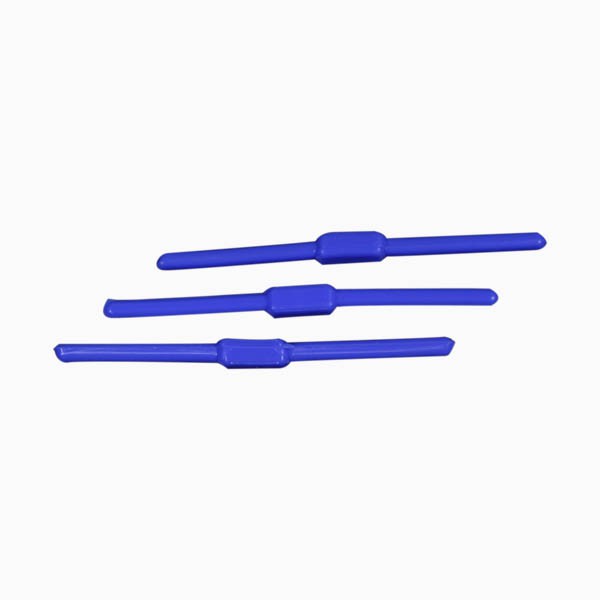What are the problems faced by high-temperature tags? What should I pay attention to when choosing a high temperature tags?
The hardest thing about high-temperature taga is making sure they stay stable and last a long time in hot places. In places with high temperatures, different parts of RFID tags may not work properly, especially the link between the tag chip and the antenna. RFID chips are usually soldered to the antenna so that they can correctly receive the energy sent by the antenna, turn on, and access data that is stored on the chip. But if these connecting parts are in a hot place for a long time, they might melt or become less strong because of the heat. This could cause the chip and antenna to split, which would make the tag useless.
Even though there are problems, there are RFID tags on the market that are made to work in high-temperature environments. These tags are made with special materials and methods that make them more resistant to high temperatures. There are some limits to how well these tags work at high temperatures and how long they last, though, so it’s important to pick the right type of tag for the job and the conditions in which it will be used.
So, when picking a high temperature tags, you should tell the tag what temperature it needs to be able to handle and how long it needs to be able to handle this temperature. This will allow for better tests. Make sure that the lifespan meets the needs of the product.
Even though high temperature tags have certain limitations, in practical cases, they are also irreplaceable by other tags. Let’s take a pharmaceutical production line in a high-temperature environment and RFID high-temperature tags as an example。
It is very important in today’s pharmaceutical business that the process of making drugs follows strict rules for cleanliness and temperature control. A big pharmaceutical business has to make sure that after high-temperature disinfection processes, key pieces of equipment and instruments on its production line can be quickly and accurately found and tracked. In order to solve this problem, the company has chosen to use RFID technology along with high-temperature tags to make production more efficient and make sure the quality of the products.
Getting started:
The business has a pharmaceutical production line that is highly automatic and is used to make a wide range of drugs that must be kept very clean. To keep the tools and equipment used in the production process clean, they need to be regularly disinfected at high temperatures using high-pressure vessels. Traditional labeling systems, on the other hand, are easily broken in hot places, which makes it hard to keep track of the state of instruments and equipment.Answer: The company has come up with high-temperature tags with RFID technology to solve this problem. It is possible for these tags to stay stable in hot and wet places, which means they won’t get damaged during the high-pressure sterilization process. After putting these high-temperature tags on each instrument and device, when they go into the high-pressure vessel, an RFID reader can instantly scan them and record information like the time, date, and length of time the devices were disinfected. The data are then sent to a central database by RFID tags that do the work for you.
It has been implemented that by using RFID high-temperature tags, the company has gained the following important advantages:
1. Increase the speed of production: Since equipment and instruments can be instantly scanned and recorded, there is less time for searching and confirming by hand, which increases the speed of production.
2. Make sure the quality of the product: keeping accurate records of how often tools and equipment have been cleaned lets you be sure they are always used in a safe state, which raises the quality of drugs.
3. Less risk: Being able to quickly check the state of instruments and equipment lowers the chance of cross-contamination from using equipment that hasn’t been properly disinfected.
4. Saving money: Because manual search and confirmation take less time, workers don’t have to work extra hours, which saves money. Costs have also gone down because resources aren’t wasted as much when the cleaning process isn’t run again.
The pharmaceutical company was unable to keep track of the state of their equipment and instruments in hot places until they introduced RFID high-temperature tags. This lowers risks and costs while also making production more efficient and making sure the quality of the result. This case shows how useful and useful RFID high-temperature tags could be in the pharmaceutical business.




